July 28, 2011
I know, here comes a topic you already know about, but unless you have read my book Mastering Cycling, you may not know that a major limiting factor in performance tuning is your own level of nutrition, especially in hot weather. No matter how well you have trained, your body’s engine will not run properly without correctly formulated and dosed fuel. What you eat and drink prior to, during, and following a major expenditure of energy has a profound effect on your strength, speed, and endurance. It also greatly affects the speed and efficiency of your recovery after intense exercise.
Let me offer a personal vignette about how things can go horribly wrong. During the first Race Across America in 1982 I thought I had everything under control. The mistake I made was equating feeling good with being properly hydrated. I neglected to fuel adequately and literally lost the race on the first day with moderate to severe dehydration. Ever been there? It’s not a happy place. To this day I recall the extreme conditions that led to my unquenchable thirst, dry mouth and lips, the sunken eyes, the headache, no availability of urine, severe muscle cramping and most memorable, cold hands and feet in 100+ degree heat!
Please keep in mind that everyone is different, and your food and fluid intake before, during, and after a race should reflect what works best for you personally. Don’t wait until the day of the race to figure it out. Some athletes prefer “sports” foods, such as gels and bars, while others like to munch on pretzels, gummy bears, or fig bars. Above all, establish a plan for fluid replacement. Experiment with these strategies during training, so that you know how your body will respond.
The Week Before Competition
The week before a long competition, eat foods you are used to. Avoid new foods and those you think might cause gastrointestinal distress. While tapering your training before the event, eat carbohydrates and proteins in a 4:1 ratio, and don’t limit your carbs to pasta and rice. Fruit, yogurt, and chocolate milk will add to your glycogen stores and will provide needed vitamins and minerals. You may gain weight, but don’t be alarmed! A full reserve of glycogen weighs more than a pound, and 3 to 4 pounds (about 1.5 kg) of water are added during the conversion process. For a short criterium this glycogen loading plan is probably unnecessary.
Two Days Before Competition
Two days before competition, be sure to hydrate well. I cannot stress this enough. Increase your liquid intake gradually by sipping small amount of liquids frequently throughout this period. Continue to eat as before, but include other electrolyte sources, including my favorite, liquid colloidal trace minerals including calcium, magnesium, potassium, and sodium. You are probably not going to find these, or the nearly 60 trace minerals that stabilize the primary electrolytes in the usual sports drinks. Do some research, especially if your race will last more than a few hours, and you are expecting hot conditions. Performance tends to fall off when the electrolytes diminish in the body, so lace the liquids in your favorite sports drink and sip your way to success.
One Day Before Competition
The day before competition, eat a good breakfast and a bigger lunch. These are your most important meals prior to race time, since they will top off your glycogen stores in time for your race. Eat familiar foods, and consume the same amount of fiber you did while you were training. Eat a good dinner, but don’t overeat or eat too late. Continue hydrating. On the flip side of dehydration, we have hyponatremia in which it is possible to over-hydrate with pure water and literally wash the minerals right through your system. For this reason, I stress small doses of mineral-laced liquids. Another of my personal favorites is product called Acid Zapper, an alkalizing agent that assists the body in maintaining optimal pH levels. It improves endurance, shortens recovery, and buffers exercise-induced acid as it is generated. It will also greatly assist in preventing cramps during your event.
Three to Four Hours Before Competition
Three to four hours before competition, people who suffer from prerace jitters may struggle to get food down. Eat whatever works for you for breakfast: cold cereal, oatmeal, energy bars, energy drinks, or small amounts of water along with copious amounts of acid zapper. Anyone who has ever ridden a 100+ mile event or stage of a tour with a full bladder will understand the necessity of finding the perfect mix of just enough fluid without overdoing it. It is common for athletes to experience some intestinal issues associated with pre-race anxiety in the hours before the scheduled start. While I have gone on record as advising consumption of around 17-20 ounces two to three hours prior to your event and 7-10 ounces 10-20 minutes before your start, my current thinking is that while this may be the ideal way to hydrate, it probably may be excessive if the peloton has no plans of stopping for you. Find your own balance in training to avoid this problem! The expected temperatures during the race and the length of the race will dictate how much you need to drink. If it is very hot, consuming a small amount of fluid or energy drink immediately before the start may create a need to hit the bathroom, which is OK, because you will begin to lose fluids soon after you begin.
During Competition
What and how much you consume during a race depends on the length of the event and the weather conditions. Try to take in enough fluids to match what you lose; don’t wait until you are thirsty. Many athletes try to consume between 500 and 1000 milligrams of sodium for every hour they are on the bike, but excessive amounts of any electrolyte can cause nausea and vomiting. If you eat a gel or an energy bar, make sure that you also take in an appropriate amount of liquid. If the race is long, check the sodium content of your carbohydrates; some gels have insufficient amounts of sodium, so you may need to alternate your gel consumption with a sports drink or pretzels. As before, you should already know what works best for you from your training experience. Above all do not try anything new during the race!
After Competition
After your event start eating and drinking within the first few minutes if possible, preferably in the first 30 minutes to maximize absorption. Carbohydrate will replenish your blood sugar and glycogen stores. Protein is necessary for your body to repair any cellular damage to your muscles and to shorten your recovery time. Nut bars plus fruit, smoothies, and chocolate milk will provide carbohydrate and protein. Post-race recovery drinks are commercially available that replenish small amounts of electrolytes, carbohydrate, and protein. Carbohydrate consumption should be at least one gram for each kilogram of body weight (pounds/2.2). Usually 10-20 grams of protein is enough for most cyclists. Drink fluids for the next few hours either until your weight returns to its prerace value or your urine is pale and not deeply colored.
Summary
Good nutrition is mandatory to help you exhibit your highest levels of athleticism and enjoy overall good health. Like your mom always told you, eat a balanced diet that includes carbohydrate, protein, and fat. As you get closer to your competition, the majority of your calories should come from carbohydrates (50-65%), much of which should consist of fruits and vegetables. Limit your protein consumption (12 to 18 percent of calories) to lean meats, nuts, and low-fat dairy products. Avoid saturated fats, and include healthy fats in your diet, keeping overall fat consumption to 20 to 30 percent of your daily calories. Nutrition and hydration before, during, and following an event are very personal requirements; if you stick to my 3 simple rules, you will be “ready to rock.”
1. Experiment during training. Try a variety of sports drinks, gels, energy bars, or other high carbohydrate food to find out what helps you kick ass, thus maximizing your performance and endurance.
2. Establish a nutritional plan and stick to it.
3. Don’t ever try anything new during your “A” race.
For specific product information described above, or more reading check out my new book Mastering Cycling available at book stores or request a personally autographed copy from: www.johnhowardsports.com
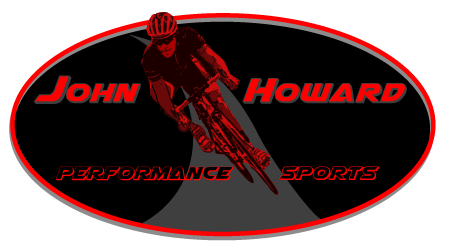
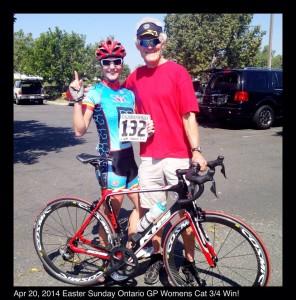
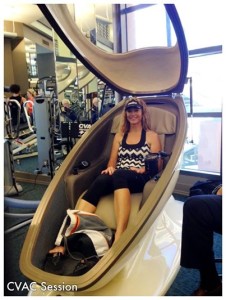
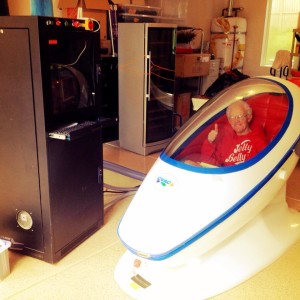


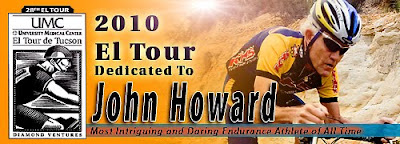
Recent Comments